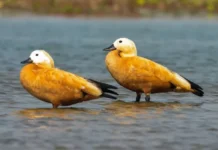Monday Musing
[ Nellie N Manpoong ]
It has been nearly 21 months since the first case of coronavirus was officially detected in India on 27 January, 2019, and it has affected community celebrations – very recently the Durga Puja celebration – in the capital. Last year, the state witnessed community festivals and celebrations in the lowest numbers possible, with small ritualistic prayers conducted wherever possible to keep the spirit of the festivals alive.
This year, the capital region, which usually witnesses an impressive Durga Puja celebration, saw a comparatively lower foot and vehicular traffic as compared to the many years of festivities observed over the years. The only area near the ICR that had a Durga Puja pandal was Doimukh – most likely because the area comes under the Papum Pare district administration.
National dailies continue to report that celebration of Indian festivals like Ganesh Chaturthi, Durga Puja, Dussehra, Navratri and other related pujas may lead to a third wave in the country. At the same time, ANI quoted Chandigarh-based Post Graduate Institute of Medical Education & Research Director Prof Jagat Ram on 13 September as saying that “India is at the beginning of Covid-19 third wave.”
One can choose to blame the festivities, but the Indian Council of Medical Research warns that “revenge tourism may trigger the third wave, with cases surging by over 40 percent.” Several other factors will contribute to the surge in Covid-19 cases in the country, and these will certainly include humans in the mix.
The state has been showing a low positivity rate over the past two months, with sporadic rises in cases in a few districts, and lower death rates (.51 percent), with the last death reported on 8 October. The recovery rate is also at an impressive 99.08 percent. However, these statistics should not be taken as reasons to be complacent and stop wearing masks or maintaining hand hygiene.
The state has reported a total of 54,987 Covid-19 positive cases since 2020 (till 17 October), and the recovery rate is also at an impressive 99.24 percent. In comparison, 280 deaths might seem minuscule. But each death has had an impact on the lives of the families and friends of those who have passed away. And those who have not encountered such a situation should consider themselves lucky instead of arguing that the persons passed away due to comorbidities and not because of Covid, or employing the overused statement, “Corona sorona sab nakli hai.”
I am no health expert, but I am fairly sure that if a body is already ridden with disease, another illness will certainly make it difficult for the body to fight several illnesses at a time, and that can be fatal for some, if not all.
The low-key puja celebrations in the capital may have likely averted a steep rise in Covid cases and even a catastrophic third wave, but we now have groups of pro-maskers and anti-maskers, much similar to pro- and anti-vaxxers. Never mind the non-maskers roaming about on the streets during puja holidays; many have not been wearing them in daily life because “Corona sorona sab nakli hai,” or because they have taken the vaccine.
Health experts have credited the Covid vaccines with helping in the fight against Covid-19, but as the Centre for Disease Control and Prevention puts it, “no vaccines are 100 percent effective.” Data suggest that vaccines may make symptoms less severe, and it typically takes about two weeks for the body to build protection after vaccination.
We cannot and should not force vaccination on someone against their will. At the same time, if we want our community festivities to continue the way they have always been, we need to take the simplest of measures, such as wearing a mask or sanitizing and washing our hands and exposed body parts. This is not only about protecting ourselves against the Covid-19 virus, but against several other airborne diseases, such as the common cold, tuberculosis, meningitis, and chickenpox, mumps and measles (especially among children).
Festivals are an integral part of every community. They are a celebration of our cultures and traditions and cannot be held without people’s participation. If these cultures and traditions need to continue, people too need to learn to embrace the new normal of wearing masks and the basic etiquette of maintaining hand hygiene.






